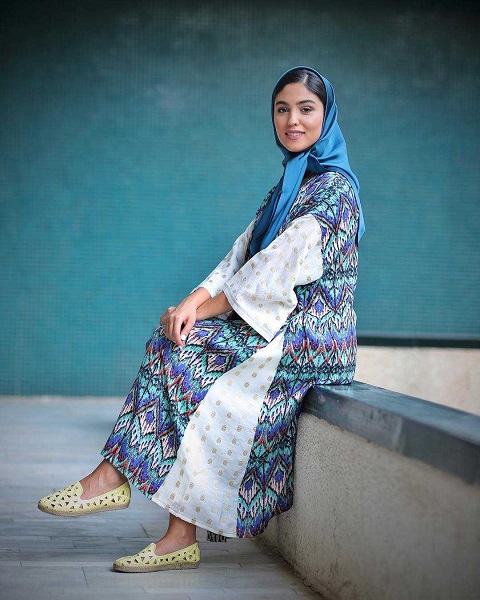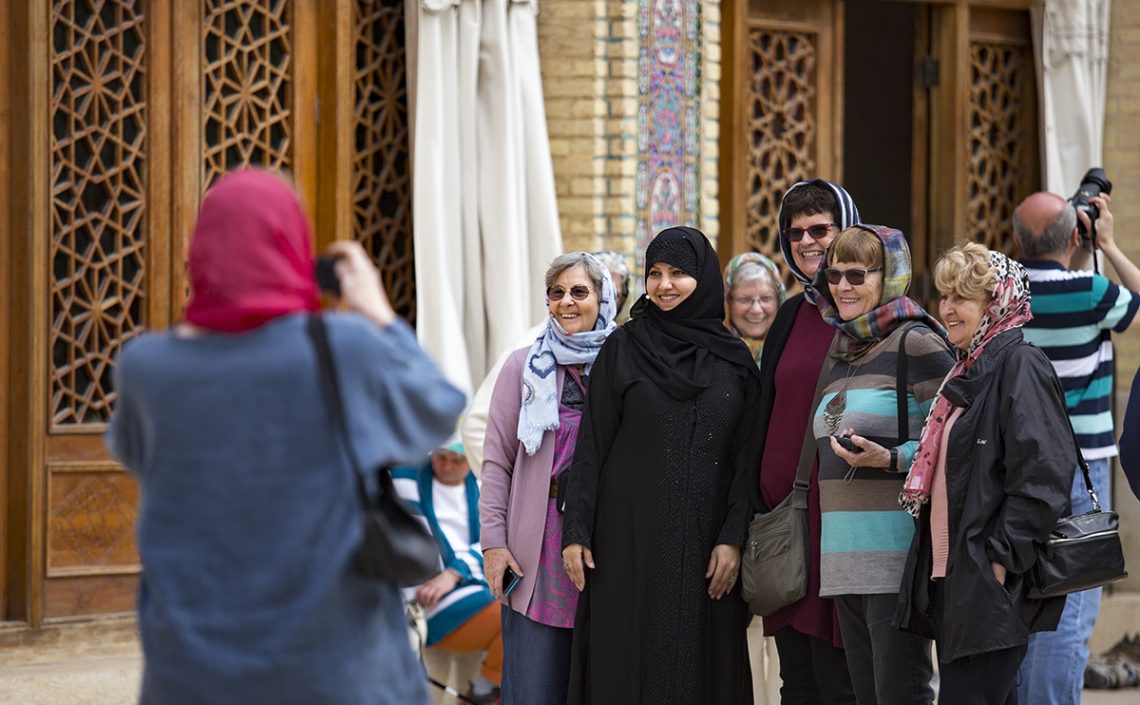So you’ve decided to visit Iran. That’s the best decision you’ve ever made! With 24 UNESCO World Heritage Sites, Iran is the land of glorious ancient sites, mysterious mosques with exquisite Persian-Islamic architecture, magnificent gardens, gorgeous palaces, historic bazaars and friendly people. Add delicious cuisines and pastries too.
From visa issues and dressing customs to finding your way on the streets, here we want to share some general issues that you have to be prepared for them before traveling to Iran.
Traveling issues
If you are not of nationalities that can enter Iran without the visa, the first step is getting an Authorization Letter from the Ministry of Foreign Affairs in Tehran. This letter indicates that you have not any restrictions to enter Iran. It usually takes 7-10 days to process. You have to get it via your relatives, host parties for business in Iran, or via travel agencies. But the most convenient way of getting the Authorization Letter is through our visa services. Check it also for more details about details of applying for the visa.
According to Iran’s MFA official website (retrieved on 27 October 2016), most nationalities except American, British and Canadian, Colombian, Afghan, Iraqi, Pakistani, Indian, Bangladeshi, and Somali passport holders can obtain Tourist visa on arrival (Only at Iran’s international airports and not land borders) for maximum a 30-day visit. You have to pay the visa fee in cash.
Currently, UK, USA, and Canadian passport holders are just able to obtain the visa as part of an escorted tour.
see also: Travel to Iran Even with an American, British or Canadian Passport
After receiving the letter, you must personally refer to the consulate you’ve determined before, submit your documents including the Authorization letter, and pick up your visa. The required documents are slightly different according to the consulate regulations, but they usually are your passport, an application form, photo, and the visa fee.
Check out this blog post: The Ultimate Guide for Iran Electronic Visa (Iran e Visa) to find out more information about getting Iran tourist visa.
Cultural Issues
Dressing
Every country has its particular culture and tradition. Some cultures are close to international customs and some are far away. Iran is in the middle. It’s not like Arab countries that even ban women of driving or forcing them to cover their face or wearing the burka, and on the other hand, it’s not very open in term of dressing like western societies.
Women in Iran have to dress modestly, as advised in Persian culture and not necessarily because of Islamic rules. They should cover their hair with a simple scarf (even not fully covered) and should not wear tight, thin (transparent) or short sleeves dresses. Although they usually wear dark Mantou (an official dress), colors are not restricted at all.
Men’s dressing is the same and typical as all other countries. Tourists do not usually wear short shorts on the streets in Iran.

iranian’s dressing, Iranian model: Ramina Torabi
Hospitality
You’ve probably heard about Iranian hospitality. There is something that all traveled to Iran emphasized in common and that’s the great hospitality of Iranian people. An ancient advice in their culture said that “The guest is loved by the Lord and you have to respect and cherish it when it arrives at your home”. This is their mindset over the centuries.
They all believe that tourists and travelers coming to the country are their guests, so they should do their best for them to feel welcome. According to The Guardian, what surprises tourists in Iran more than the stunning ancient sites is its welcoming people. Iranians are super friendly and helpful people.
If you need help just ask them, they love to help you without any expectation in return. So quickly get rid of common conservativeness and your quiet time as a foreign visitor and mix with lively and friendly Iranians. Making friends with Iranian is very easy. They love to have foreign friends. They are really interested in talking to you and sharing their culture and life style with you and also learn about yours. They are always willing to invite you to their house to spend a night with them.
Iranians love social media. You can find lots of local friends on Facebook, Twitter, Instagram, or travel-specific social media that are eager to be your guide even for free. If you are looking for an adventure trip to Iran check out this article: Are You Ready for Adventurous Holidays in Iran?
Safety
First, forget everything you’ve heard or read on the media. They don’t represent the real Iran. Yes, there have always been many political tensions between Iran and the world powers for years, but those are just among politicians. Despite the negative political news especially on western media, the people life flows on safer than everywhere else in the world. Second, if you want to know what’s exactly going on in this country simply try to see Iran through the eyes of other travelers. Look what they say about safety and hospitality in this country.
Today, after the nuclear deal the tensions are lesser than the past, sanctions are lifted, and the medias have rarely found negative news about Iran. Visitors enter Iran easier and feel safe even more than their countries.
Check out this blog post: Safety in iran: what travelers need to know to learn more about safety issues in Iran.

safety in iran
Transportation Issues
On The Streets
Iran is almost a convenient country to visit. Most street signs especially in tourist cities such as Tehran, Shiraz, and Isfahan are bilingual. The Google maps work fine in Iran and it’s a great help to find your way quickly. But since the internet in Iran is not reliable downloading the offline map or using offline travel guides will be a good idea.
Public transportation services in Iran work fine especially in the major cities. The cheapest and usually the fastest option especially in Tehran is subway. You can find the subway map of all major cities on the internet or find the nearest subway stations according to your location on the Google maps. Buses and taxis are another reliable options to get around the cities. Just beware that taxis are not private in Iran and they may stop to pick up more passengers and full their capacity (up to four passengers). If you prefer a private taxi, you should negotiate with the driver not to stop for more passengers (say them “Dar-bast”) and also for the price and the destination, or call one from a taxi service company.
Above all, if you need any help about the addresses and routes don’t forget to ask people for help. Super friendly Iranians will eagerly guide you and show you the best way to get to your intended destination.
Domestic Trips
It’s very easy and convenient to go from anywhere to anywhere in Iran. You have three options to do so. The best and fastest way is the plane. All major cities have a modern airport and variety of daily domestic flights are available as request. The train is another great way to navigate Iran. There are several daily trains moving between major cities. Finding a train ticket on demand is very difficult because the train seats especially in busy routes are usually sold quarterly. Just decided to go to or back from anywhere? No problem, wherever you are, head to the bus terminal, and you’ll usually find a bus within an hour or two.
The last important thing, keep calm and be ready for delays! Delay in train time schedule is very rare, in bus schedules is usually very small, but in flight schedules is almost permanent!
Check out this blog post: Iran Travel Guide: Discover Iran on Plane, Train and Ferry to find more advice about transportation services in Iran.
The difficult bit is booking. Online booking of the flight, train, and bus tickets is not convenient for foreigners yet mostly because of the payment system. International payment services such as Master Card, Paypal, etc. are not available in Iran yet. That’s where 1stquest.com comes in! Just look at our transportation booking services to find more information about.
Accommodation Issues
Hotels
Rapid growth in the number of visitors has boosted Iran’s tourism industry. As a result, the hotels are competing to improve their amenities and services to satisfy all types of foreign travelers. Trying to save money with staying in a simple room, preferring a spacious luxury room, or dreaming about staying in a centuries-old mansion for a night or two? No problem, you can find your desired one, especially in all major tourist cities.
Hospitality standards of Iran’s hotels are a little bit different from international hotels, but you will definitely have a relaxing and convenient accommodation there. The best way is doing some research. Check out the travelers’ reviews about hotels in Tripadvisor and also our experts’ reviews on 1stquest.com, and then book the one that best fits your budget and also your taste right there. You can find out more information about budget hotels in this blog post: Where to sleep on budget in Iran? (Iran budget hotels).

Espinas Palace Hotel, Tehran, Iran
Payment
The good news that you’ve probably heard about it a lot is that Iran is a very affordable country to visit nowadays. That’s because Iran currency has been losing its value against the dollar for years. The bad news is that Iran is still disconnected from international payment systems, and you have to pay for everything in cash. Most of the shops accept U.S dollar or Euro, but it’s better to change a part of your money to have more convenient payments.
Most of the foreign currencies such as US dollar, Euro, British Pound are easily exchangeable in the country. You can change your money at the airport on arrival, banks with a foreign currency office, and the private exchange bureaus throughout the country.
Not to confuse about currency, beware that people usually use the Toman measure to express the prices and costs in their daily deals. 10 Rial = 1 Toman, that means that you should simply remove a zero from the prices in Rial if you want to convert it to Toman.
You can find out more information about currency in this blog post: Iran Travel Guide: Currency
Cell Phone
SIM Card for your cell phone is another important thing on a trip, and more important in Iran. That’s also the best way to access high-speed internet everywhere. You have to call back, send a message, or post a tweet to say the world how much fun you have in this ancient country. You can buy one and also register it in the IKA airport upon arrival or from numerous offices of all major mobile service providers such as IranCell, MCI, and RighTel available everywhere in the country.
All SIM Cards should be charged by the prepaid credits to get operational. You can buy credit from all newspaper kiosks, grocery stores, and also hypermarkets. They give you a 16-digit pin to apply to your phone using USSD codes.
By: Iman
